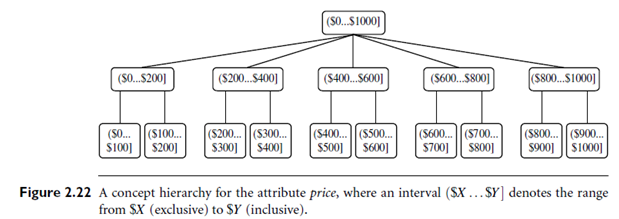SKEDSOFT
Introduction: Data discretization techniques can be used to reduce the number of values for a given continuous attribute by dividing the range of the attribute into intervals. Interval labels can then be used to replace actual data values. Replacing numerous values of a continuous attribute by a small number of interval labels thereby reduces and simplifies the original data. This leads to a concise, easy-to-use, knowledge-level representation of mining results.
Discretization techniques can be categorized based on how the discretization is performed, such as whether it uses class information or which direction it proceeds (i.e., top-down vs. bottom-up). If the discretization process uses class information, then we say it is supervised discretization. Otherwise, it is unsupervised. If the process starts by first finding one or a few points (called split points or cut points) to split the entire attribute range, and then repeats this recursively on the resulting intervals, it is called top-down discretization or splitting. This contrasts with bottom-up discretization or merging, which starts by considering all of the continuous values as potential split-points, removes some by merging neighborhood values to form intervals, and then recursively applies this process to the resulting intervals. Discretization can be performed recursively on an attribute to provide a hierarchical or multi resolution partitioning of the attribute values, known as a concept hierarchy. Concept hierarchies are useful for mining at multiple levels of abstraction.

A concept hierarchy for a given numerical attribute defines a discretization of the attribute. Concept hierarchies can be used to reduce the data by collecting and replacing low-level concepts (such as numerical values for the attribute age) with higher-level concepts (such as youth, middle-aged, or senior). Although detail is lost by such data generalization, the generalized data may be more meaningful and easier to interpret. This contributes to a consistent representation of data mining results among multiple mining tasks, which is a common requirement. In addition, mining on a reduced data set requires fewer input/output operations and is more efficient than mining on a larger, un-generalized data set. Because of these benefits, discretization techniques and concept hierarchies are typically applied before data mining as a preprocessing step, rather than during mining. An example of a concept hierarchy for the attribute price is given in Figure 2.22.More than one concept hierarchy can be defined for the same attribute in order to accommodate the needs of various users.
Manual definition of concept hierarchies can be a tedious and time-consuming task for a user or a domain expert. Fortunately, several discretization methods can be used to automatically generate or dynamically refine concept hierarchies for numerical attributes. Furthermore, many hierarchies for categorical attributes are implicit within the database schema and can be automatically defined at the schema definition level.
Let’s look at the generation of concept hierarchies for numerical and categorical data.